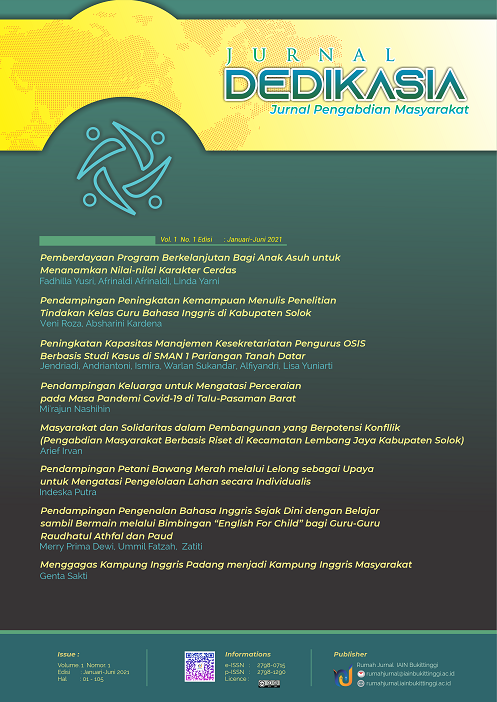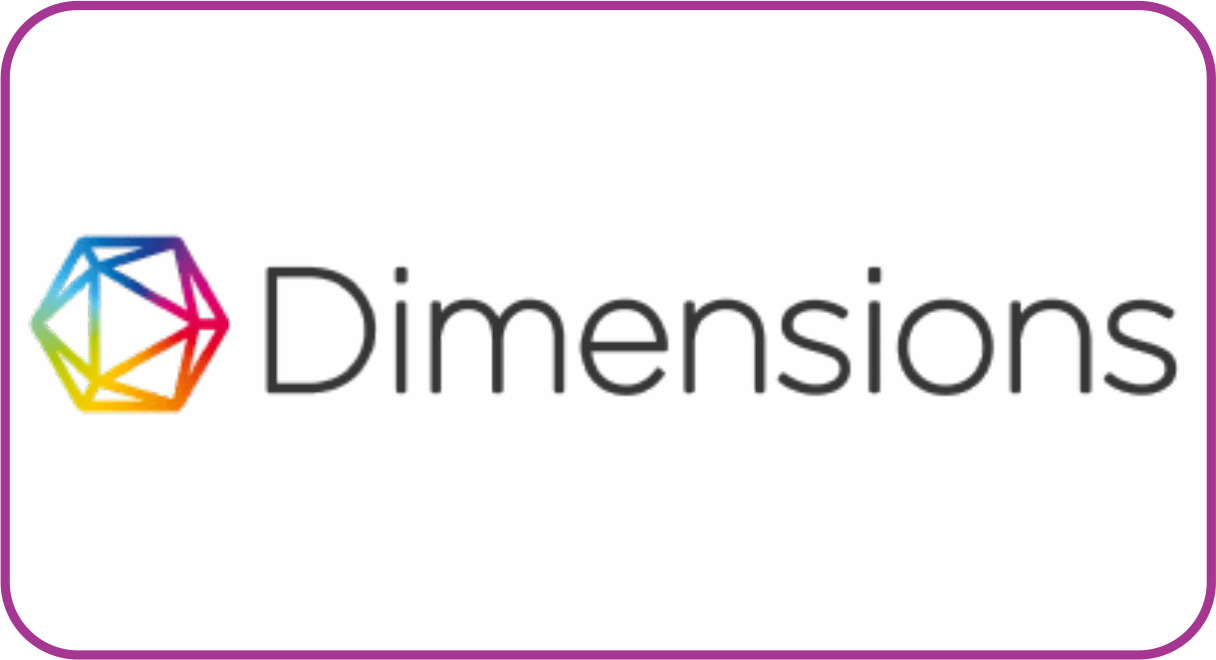Pendampingan Peningkatan Kemampuan Menulis Penelitian Tindakan Kelas Guru Bahasa Inggris di Kabupaten Solok
DOI:
https://doi.org/10.30983/dedikasia.v1i1.4630Keywords:
pendampingan, penelitian tindakan kelasAbstract
Increasing teacher competence should be carried out continuously. It is aimed to increase the professionalism of teachers in the field of teaching. One of ways that can be done to improve teacher pedagogical competence is by conducting Classroom Action Research (CAR). This research aims to improve the approach in teaching so that the results of student achievement can be improved. However, the implementation of CAR is often being an obstacle for teachers because of their lack of knowledge related to the implementation of CAR, which starts from the preparation of proposals, conducting research, to reporting research. It becomes a real urgency for teachers to get assistance in preparing CAR proposals as an initial step in implementing CAR in schools. An assistance for writing CAR proposals is a necessity for teachers so that the teachers have a strong basis for implementing CAR properly and correctly. Therefore, this assistance is carried out to improve the ability of teachers to write CAR proposals so that the final goal of implementing a good CAR can be realizedReferences
Depdiknas, Permendiknas Nomor 16 tahun 2007 tentang Standar Kompetensi Guru. Jakarta: Depdiknas, 2007.
Depdiknas, Peraturan Pemerintah Nomor 19 tahun 2005 tentang Standar Nasional Pendidikan. Jakarta: Depdiknas, 2005.
and D. N. Bailey, K., A. Curtis, Pursuing professional development: The self assource. Ontario: Heinle and Heinle, 2001.
M. Asrori, Penelitian Tindakan Kelas. Bandung: CV Wacana Prima, 2008.
& S. Arikunto, S, Suhardjono, Penelitian Tindakan Kelas. Jakarta: Bumi Aksara, 2006.
Depdiknas, Undang-undang No. 14 tahun 2005 tentang Guru dan Dosen. Jakarta: Depdiknas, 2005.
A. Jordan, M & Herrel, 50 Strategies for Teaching English Language Learners. New Jersey: Pearson Merril Prentice Hall., 2008.
R. Kemmis, S. & Mc. Taggart, The Action Research Planner. Victoria: Deakin University Press, 1992.
M. H. Furtrell, “Empowering teachers as learners and leaders,†in Teachers as leaders: Perspectives on the professional development ofteachers, Bloomington: Phi Delta Kappan Educational Foundation, 1994, pp. 119–136.
L. Johnson, Pengajaran yang Kreatif dan Menarik. Jakarta: PT Macanan Jaya Cemerlang, 2008.
and J. A. C. Chisman, F. P., Passing the torch: Strategies for innovation incommunity college ESL. New York: Council for Advancement of Adult Literacy, 2007.
S. T. Celce-Murcia, M., Z. Dornyei, “Communicative Competence: A Pedaogically Motivated Model with Content Specifiations,†Issues Appl. Linguist., vol. 6, no. 2, 1995.
and K. A. Galbraith, P., “Peer coaching: An effective staff development modelfor educators of linguistically and culturally diverse students,†1995. .
Kunandar, Langkah-Langkah Penelitian Tindakan Kelas. Jakarta: PT.Raja Grafindo Persada, 2008.
M. Nur, Penelitian Tindakan Kelas (konsep dasar dan langkah-langkah PTK). Departemen Pendidikan Nasional Universitas Negeri Surabaya PSMS Pascasarjana, 2001.
S. Kardi, Penelitian Tindakan Kelas. Kumpulan Makalah Teori Pembelajaran MIPA. Departemen Pendidikan Nasional Universitas Negeri Surabaya PSMS Pascasarjana., 2000.
Downloads
Submitted
Accepted
Published
Issue
Section
License
Authors who publish with this journal agree to the following terms:
- Authors retain copyright and grant the journal right of first publication with the work simultaneously licensed under a Creative Commons Attribution License that allows others to share the work with an acknowledgment of the work's authorship and initial publication in this journal.
- Authors are able to enter into separate, additional contractual arrangements for the non-exclusive distribution of the journal's published version of the work (e.g., post it to an institutional repository or publish it in a book), with an acknowledgment of its initial publication in this journal.
- Authors are permitted and encouraged to post their work online (e.g., in institutional repositories or on their website) prior to and during the submission process, as it can lead to productive exchanges, as well as earlier and greater citation of published work (See The Effect of Open Access).









